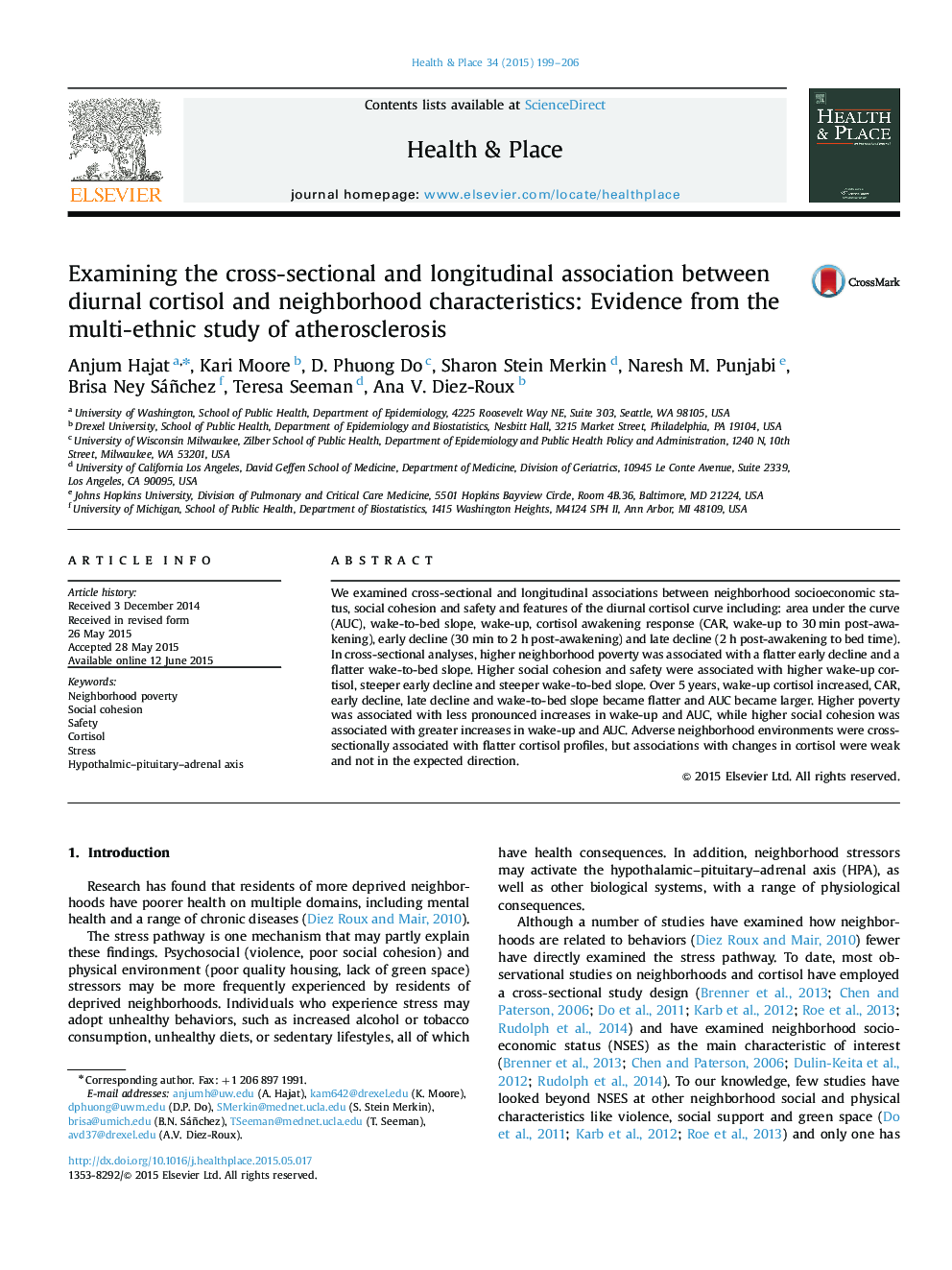| کد مقاله | کد نشریه | سال انتشار | مقاله انگلیسی | نسخه تمام متن |
|---|---|---|---|---|
| 7458030 | 1484527 | 2015 | 8 صفحه PDF | دانلود رایگان |
عنوان انگلیسی مقاله ISI
Examining the cross-sectional and longitudinal association between diurnal cortisol and neighborhood characteristics: Evidence from the multi-ethnic study of atherosclerosis
ترجمه فارسی عنوان
بررسی رابطه متقابل و طولی بین کورتیزول روزانه و ویژگی های محله: شواهد حاصل از مطالعات چند نژادی از آترواسکلروز
دانلود مقاله + سفارش ترجمه
دانلود مقاله ISI انگلیسی
رایگان برای ایرانیان
کلمات کلیدی
موضوعات مرتبط
علوم پزشکی و سلامت
پزشکی و دندانپزشکی
سیاست های بهداشت و سلامت عمومی
چکیده انگلیسی
We examined cross-sectional and longitudinal associations between neighborhood socioeconomic status, social cohesion and safety and features of the diurnal cortisol curve including: area under the curve (AUC), wake-to-bed slope, wake-up, cortisol awakening response (CAR, wake-up to 30Â min post-awakening), early decline (30Â min to 2Â h post-awakening) and late decline (2Â h post-awakening to bed time). In cross-sectional analyses, higher neighborhood poverty was associated with a flatter early decline and a flatter wake-to-bed slope. Higher social cohesion and safety were associated with higher wake-up cortisol, steeper early decline and steeper wake-to-bed slope. Over 5 years, wake-up cortisol increased, CAR, early decline, late decline and wake-to-bed slope became flatter and AUC became larger. Higher poverty was associated with less pronounced increases in wake-up and AUC, while higher social cohesion was associated with greater increases in wake-up and AUC. Adverse neighborhood environments were cross-sectionally associated with flatter cortisol profiles, but associations with changes in cortisol were weak and not in the expected direction.
ناشر
Database: Elsevier - ScienceDirect (ساینس دایرکت)
Journal: Health & Place - Volume 34, July 2015, Pages 199-206
Journal: Health & Place - Volume 34, July 2015, Pages 199-206
نویسندگان
Anjum Hajat, Kari Moore, D. Phuong Do, Sharon Stein Merkin, Naresh M. Punjabi, Brisa Ney Sáñchez, Teresa Seeman, Ana V. Diez-Roux,
